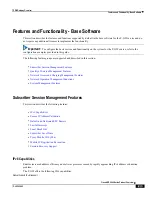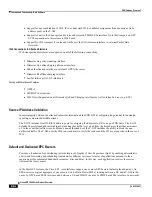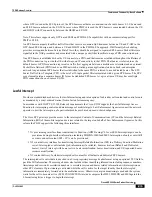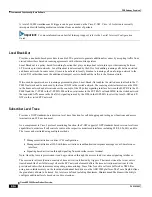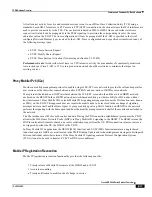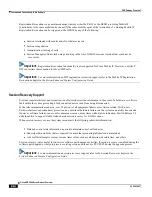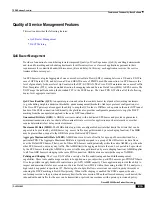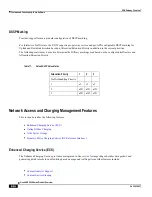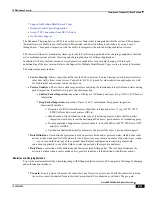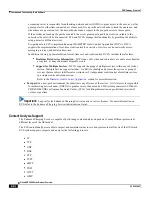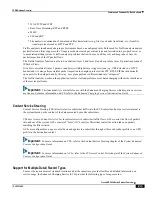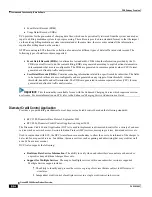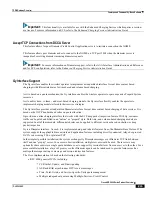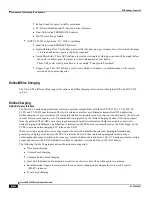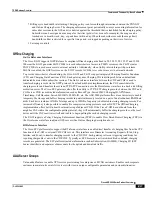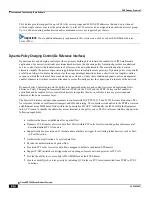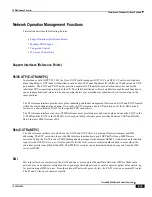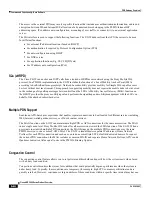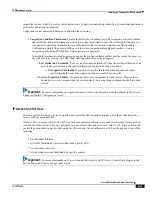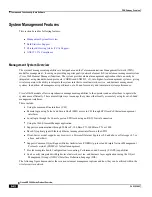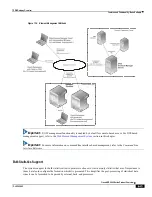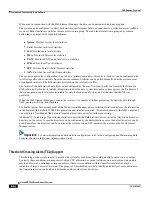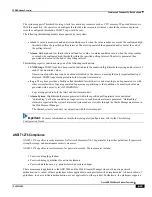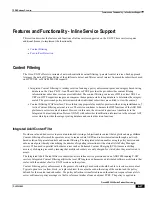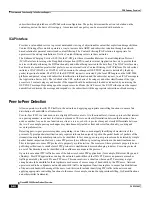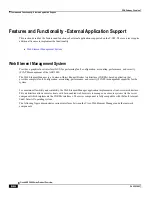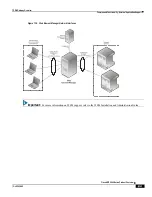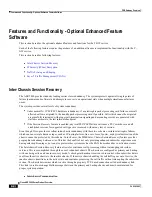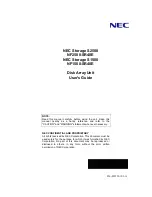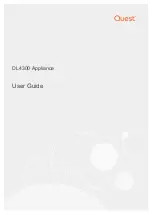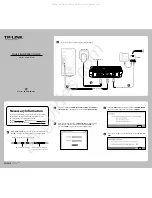
PDN Gateway Overview
Features and Functionality - Base Software ▀
Cisco ASR 5000 Series Product Overview ▄
OL-22938-02
Billing cycle bandwidth rate limiting: Charging policy is enforced through interactions between the PDN GW
and Online Charging Server. The charging enforcement point periodically conveys accounting information for
subscriber sessions to the OCS and it is debited against the threshold that is established for the charging policy.
Subscribers can be assigned a max usage for their tier (gold, silver, bronze for example), the usage can be
tracked over a month, week, day, or peak time within a day. When the subscriber exceeds the usage limit,
bandwidth is either restricted for a specific time period, or dropped depending on their tier of service.
Fair usage controls
Offline Charging
Ga/Gz Reference Interfaces
The Cisco P-GW supports 3GPP Release 8 compliant offline charging as defined in TS 32.251,TS 32.297 and 32.298.
Whereas the S-GW generates SGW-CDRs to record subscriber level access to PLMN resources, the P-GW creates
PGW-CDRs to record user access to external networks. Additionally, when Gn/Gp interworking with pre-release
SGSNs is enabled, the GGSN service on the P-GW records G-CDRs to record user access to external networks.
To provide subscriber level accounting, the Cisco S-GW and P-GWs support integrated Charging Transfer Functions
(CTF) and Charging Data Functions (CDF). Each gateway uses Charging-ID's to distinguish between default and
dedicated bearers within subscriber sessions. The Ga/Gz reference interface between the CDF and CGF is used to
transfer charging records via the GTPP protocol. In a standards based implementation, the CGF consolidates the
charging records and transfers them via an FTP/S-FTP connection over the Bm reference interface to a back-end billing
mediation server. The Cisco EPC gateways also offer the ability to FTP/S-FTP charging records between the CDF and
CGF server. CDR records include information such as Record Type, Served IMSI, ChargingID, APN Name,
TimeStamp, Call Duration, Served MSISDN, PLMN-ID, etc. The ASR 5000 platform offers a local directory to enable
temporary file storage and buffer charging records in persistent memory located on a pair of dual redundant RAID hard
disks. Each drive includes 147GB of storage and up to 100GB of capacity is dedicated to storing charging records. For
increased efficiency it also possible to enable file compression using protocols such as GZIP. The Offline Charging
implementation offers built-in heart beat monitoring of adjacent CGFs. If the Cisco P-GW has not heard from the
neighbor CGF within the configurable polling interval, they will automatically buffer the charging records on the local
drives until the CGF reactivates itself and is able to begin pulling the cached charging records.
The P-GW supports a Policy Charging Enforcement Function (PCEF) to enable Flow Based Bearer Charging (FBC) via
the Gy reference interface to adjunct OCS servers (See Online Charging description above).
Rf Reference Interface
The Cisco EPC platforms also support the Rf reference interface to enable direct transfer of charging files from the CTF
function of the P-GW to external CDF/CGF servers. This interface uses Diameter Accounting Requests (Start, Stop,
Interim, and Event) to transfer charging records to the CDF/CGF. Each gateway relies on triggering conditions for
reporting chargeable events to the CDF/CGF. Typically as EPS bearers are activated, modified or deleted, charging
records are generated. The EPC platforms include information such as Subscription-ID (IMSI), Charging-ID (EPS
bearer identifier) and separate volume counts for the uplink and downlink traffic.
AAA Server Groups
Value-added feature to enable VPN service provisioning for enterprise or MVNO customers. Enables each corporate
customer to maintain its own AAA servers with its own unique configurable parameters and custom dictionaries.
Summary of Contents for ASR 5000 Series
Page 1: ......
Page 26: ......
Page 48: ...New In Release 10 0 SCM Features Cisco ASR 5000 Series Product Overview OL 22938 02 ...
Page 50: ......
Page 58: ......
Page 68: ......
Page 126: ......
Page 138: ......
Page 146: ......
Page 218: ......
Page 236: ......
Page 356: ......
Page 374: ......
Page 422: ......
Page 496: ......
Page 572: ......
Page 654: ......
Page 700: ......
Page 726: ......
Page 784: ......
Page 816: ......
Page 844: ......
Page 906: ......
Page 926: ......
Page 942: ......
Page 943: ...Cisco ASR 5000 Series Product Overview OL 22938 02 Chapter 30 Technical Specifications ...
Page 966: ......
Page 972: ......

